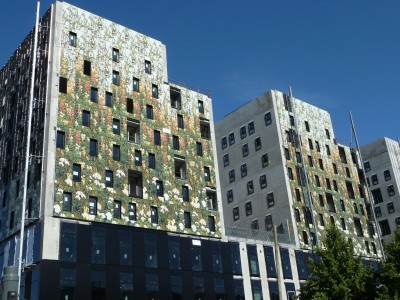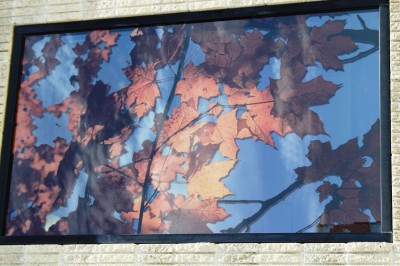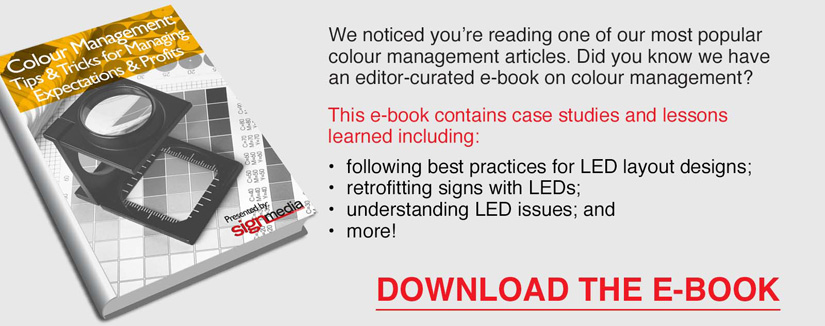By Brian R. Savage
In the past, when architects wanted to add printed design elements to the glass ‘skin’ of a building, they were limited to one- or two-colour screenprinting or digital printing technologies with difficult organic-based inks. Today, however, ceramic-based inks are allowing for a more controllable digital printing process and yielding durable, long-lasting, full-colour graphics.
Screenprinting has usually been considered the most cost-effective method for adding graphics to architectural glass when only one or two colours are to be printed in a repeating pattern across many glass units. The screens themselves, however, can be cost-prohibitive and are limited in terms of the number of prints they can produce before the end of their useful life.
Digital printing can be thought of as a complement to analogue options and may not be ideal for all circumstances, but it does help remove some earlier barriers, particularly by supporting multiple colours within a complex design.
Today, a new generation of digital printers is giving designers the opportunity to turn what was once simply the functional façade of a building into an ornate canvas. In some cases, they can even use the technique to optimize the solar performance of the façade.

Otherwise plain façades can now be decorated cost-effectively with digital printing. Photos courtesy Dip-Tech Digital Printing Technologies
Ink flexibility
There are different types of digital printing processes for the architectural glass market. The two main differences between techniques are the types of ink used and how the machines transfer the ink onto the glass substrate.
Inkjet printers with drop-on-demand technology use a programmable printhead that traverses back and forth just above the substrate. Each colour of ink has a dedicated grouping of nozzles on the printhead, which can be individually activated to ensure ink drops reach the substrate in their proper locations.
For printing on glass, the main ink options include organic ultraviolet-curable (UV-curable), inorganic ceramic and other specialized inks intended for printing interlayers in laminated applications.
In the past, the physical properties of the ceramic frit—i.e. the design to be adhered to the glass substrate—made it difficult to use with an inkjet printer, as particles within the frit had a corrosive effect on the printhead. Such drawbacks have since been addressed and there are now ceramic inks that are practical for use in digital printers.
With the flexibility of today’s digital printing, it can be used with a ‘monolithic’ glass substrate or with laminated glass and insulating glass units (IGUs). Solar control coatings, for example, can be applied directly over the print to improve the solar performance of a glass façade. In addition to exterior façades, digitally printed glass can be incorporated into interior dividing walls, office walls and, of course, signage.
The current versatility and resolution capabilities of ceramic inks support more types of graphics than in the past, including photorealistic images, legible text and texture patterns to simulate wood grain, granite and marble. Also, the transparency and opacity levels of the graphics are controllable.
With ceramic inks, digitally printed glass can be cleaned and cared for in the same manner as other types of glass. As a general rule, if something could harm the glass, then it could harm the print—but in most of these architectural applications, the graphics are permanently protected within an insulating or laminated unit.








